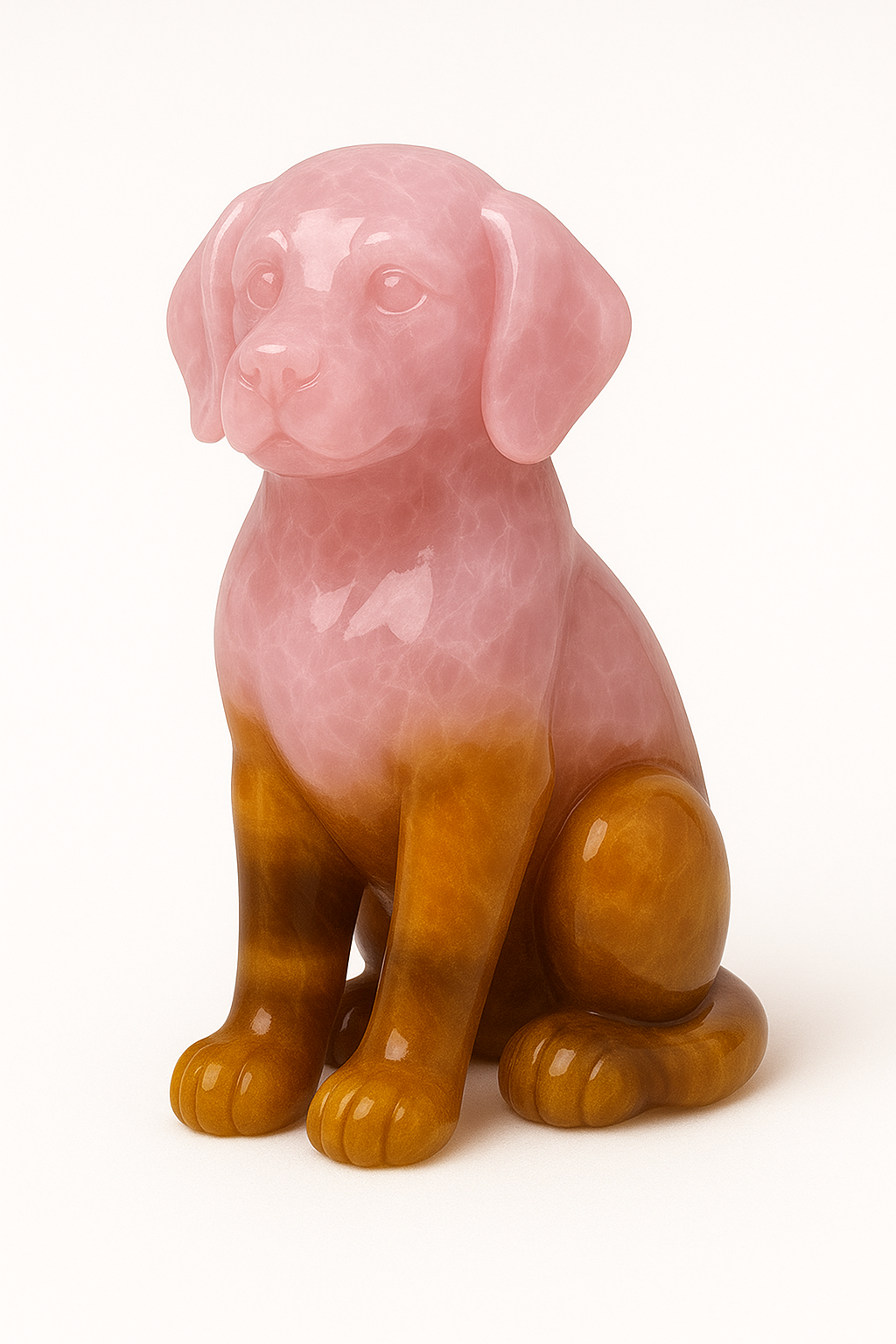
The Symbolism of Dogs
Share
In the field, by the hearth, at the side of the wanderer or the child, the dog walks... not ahead, not behind, but with. It is a creature of constancy, loyalty, and devotion. Unlike the feline, who teaches solitude and inner vision, the dog’s lesson is of connection, trust, and service. It is a being whose entire posture—physical and energetic—leans toward the other, toward the group, toward the beloved.
To contemplate the dog is to encounter the energy of devotion without demand, a love that does not retreat. Its presence symbolizes a purity of heart in relationship, an alignment with shared purpose, and an embodiment of the harmonized social self.
From Campfires to Temples
Across cultures, the dog has long stood as both companion and guardian. Its bond with humankind stretches beyond memory, into the early chapters of third-density evolution, where it stood watch beside the fire and followed the hunt with silent dedication.
In ancient Egypt, the jackal-headed deity Anubis presided over the transition between life and death, guiding souls through unseen thresholds. Here, the dog was psychopomp—not just physical companion, but spiritual escort. Among the Celts, hounds were often associated with warriors and hunters, their loyalty extending into myth and battle. In Eastern traditions, guardian lion-dogs stood before temples—stone sentinels protecting sacred spaces.
Yet in daily life, across vast regions of this planetary sphere, the dog became a symbol of home—not because it remained there, but because it made others feel they had arrived.
Behavioral Truths of Service and Sensitivity
The dog’s behavior reveals an orientation toward bonding, toward being in relationship. It reads the emotional fields of others with great sensitivity, adjusting its energy in response to joy, fear, or sorrow. This responsiveness is not strategic—it is devotional.
Unlike creatures that keep to themselves, the dog follows, not from subservience, but from unity of will. It does not ask to lead, only to belong. This energetic pattern makes the dog a clear mirror for the dynamic of trust, and its distortions—abandonment, betrayal, over-attachment.
The dog protects. It plays. It waits. It returns. These behaviors are not random—they are expressions of an energy system tuned to group harmony, to emotional attunement, and to love in motion.
Resonance with the Energy Centers
The dog expresses a primary alignment with the green-ray energy center—the heart chakra. This is love not in abstract form, but in expression, in action. The dog gives love without condition, and without concern for return. It holds no agenda, only presence.
Its affection is not limited to kin, but extended to tribe—sometimes even to stranger or foe. In this, the dog transcends instinctual self-preservation, leaning into the energy of healing relationship and energetic openness.
A secondary resonance may be found in the yellow-ray energy center, the solar plexus, which governs social roles, group structures, and identity within collectives. The dog often functions within a pack or household by intuiting hierarchy, supporting group coherence, and understanding its place in the system. Unlike the gorilla, whose yellow-ray energy expresses through leadership and authority, the dog’s yellow-ray is supportive—it integrates into systems rather than shaping them.
Thus, in the dog is found an expression of green-ray love within yellow-ray harmony—an open heart moving within a structured field, giving devotion its form and focus.
The Companion of the Heart
To walk with a dog is to walk with a being who teaches presence through devotion, who does not seek to be worshipped, but simply to be with. The dog teaches that love can be simple, steadfast, and physical. That touch, eye contact, shared rhythm, and simple nearness are all forms of sacred expression.
In moments of grief, it stays. In moments of joy, it celebrates. The dog is not concerned with metaphysics, but lives its teaching completely—a living emissary of love grounded in body and behavior.
The dog is not perfect, for it may cling, fear abandonment, or mirror human distortions. But even in this, it reflects the lesson: that love must not only be given, but understood, tended, and made reciprocal.
Among animal symbols, the dog is a living emblem of love that stays, of the spirit of service, and of the bond that heals.
It walks with the heart,
and for the heart.